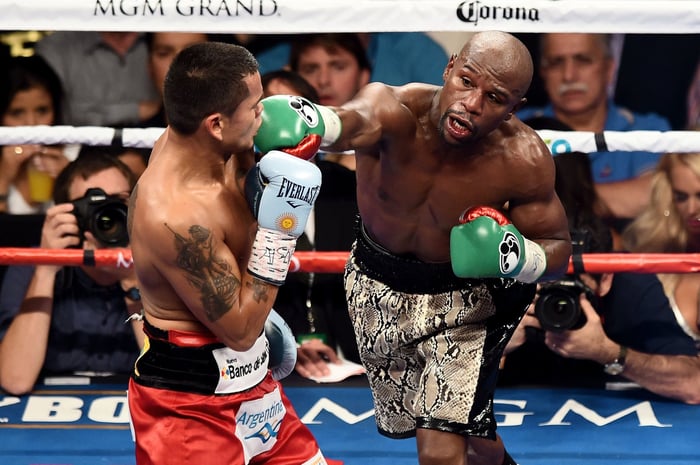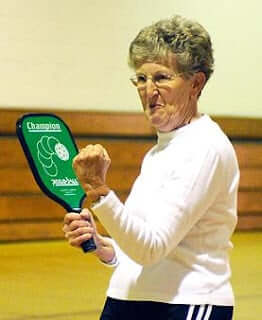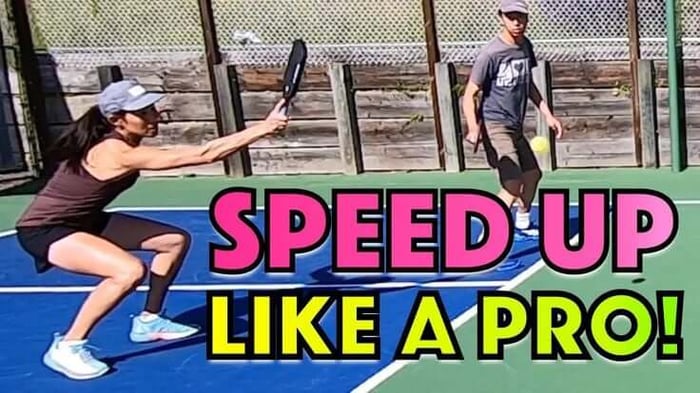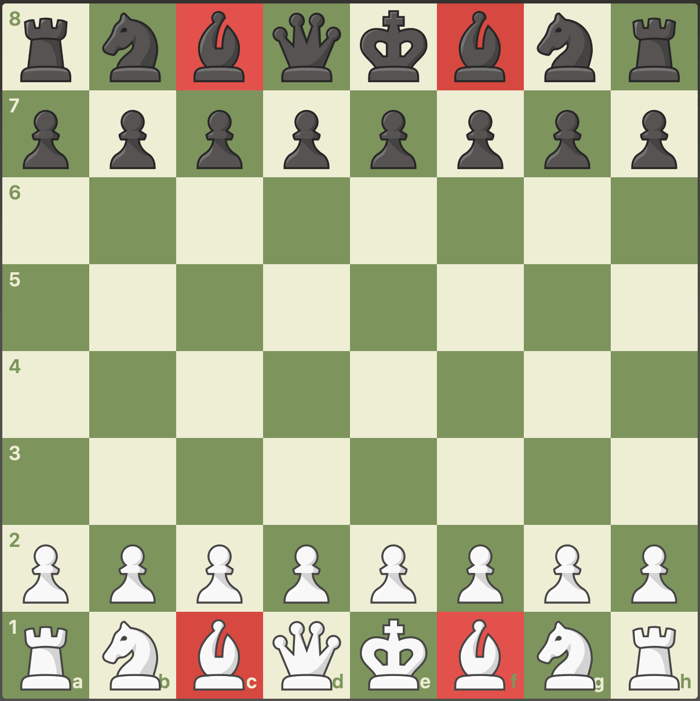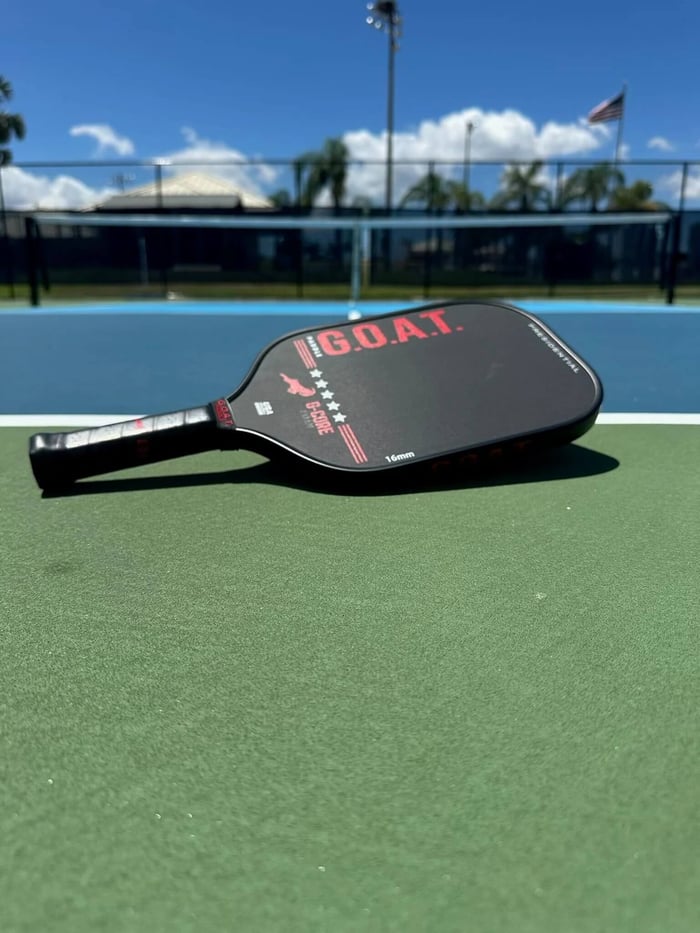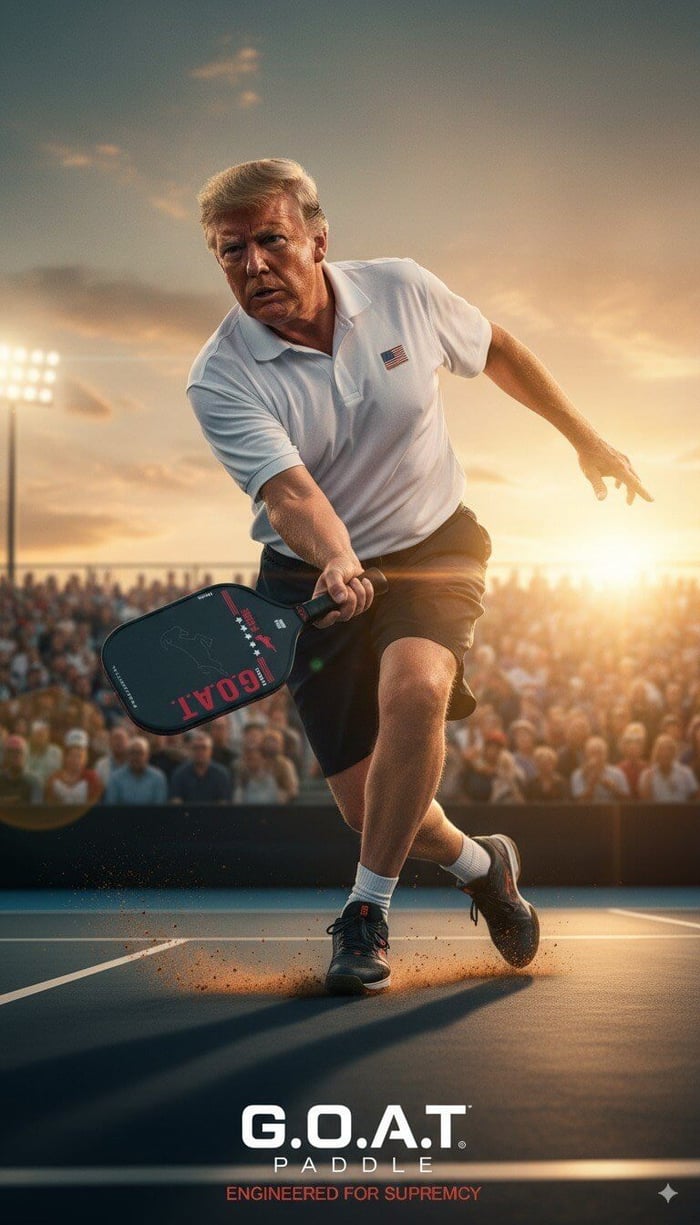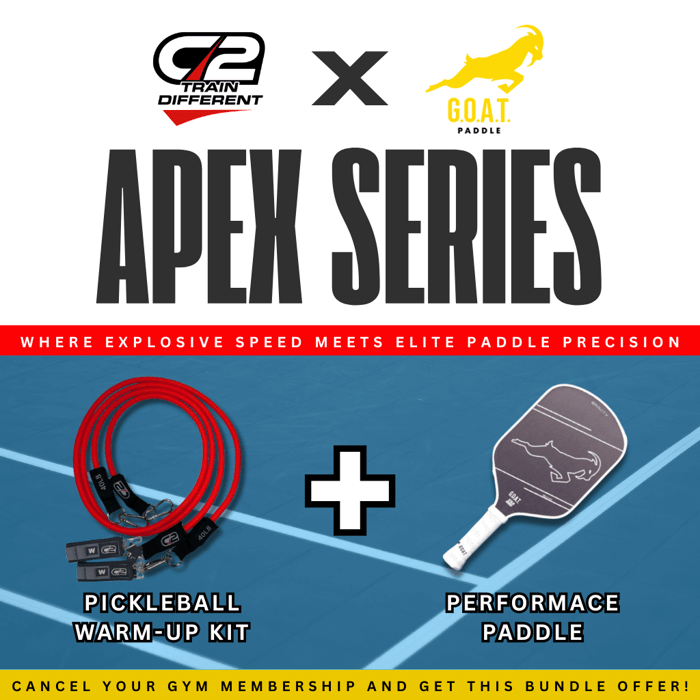A Deep-Dive Case Study into Pickleball Speed-Ups, Winning Patterns, Triangle Theory, and Why the G.O.A.T. Presidential Paddle Series Dominates the Fast Game
Pickleball is no longer a leisurely game reserved for retirees or backyard enthusiasts. It has evolved into a fast-paced, chess-like battle where milliseconds matter and decisions at the kitchen line can define the outcome of a match. As the sport grows in intensity, one aspect of gameplay has risen to the forefront: the speed-up.
The strategic question many advanced players grapple with today is:
Is it better to initiate the speed-up or to wait and counter?
This blog dives deep into case studies, pro match patterns, controversial opinions, and theoretical frameworks—most notably the Triangle Theory—to help you decide when to speed up, how to read the incoming heat, and what paddle is engineered to win those high-velocity exchanges: The G.O.A.T. Presidential Paddle Series.
Presidential 14mm G-Core Foam G.O.A.T. Paddle

$279.99
🐐 G.O.A.T. Paddle Presidential Series – 14mm Fast Hands. Full Feel. The Future Is Foam. The G.O.A.T. Paddle Presidential Series 14mm is where performance precision meets technological disruption. Built around a proprietary full foam core, this paddle delivers a level… read more
Case Study 1: You Speed It Up vs. They Speed It Up
Let’s look at two contrasting elite-level scenarios.
Scenario A: YOU Speed It Up
Player: Riley (Advanced 5.0 level player)
Opponent: Javier (Equal skill level)
Pattern: Third shot drop, reset, dink rally ensues. Riley speeds it up cross-court at chest height.
Outcome: Riley loses the point 63% of the time when initiating speed-ups from his backhand side.
Why?
Predictable speed-up location
Cross-court angle makes the attack easier to read
Javier is sitting on the backhand counter
Speed-up into space, not into body
Insight: Initiating a speed-up without proper setup or body deception often backfires. Especially when the opponent expects it.
Scenario B: THEY Speed It Up
Player: Riley (Same as above)
Opponent: Javier initiates from forehand middle to Riley’s right shoulder.
Outcome: Riley wins the point 58% of the time through a reflex-based block or counterattack.
Why?
Defensive positioning ready for reflex blocks
Speed favors the prepared counter-puncher
Javier overextends and exposes himself post-attack
Insight: Waiting for the opponent to speed it up often allows for better anticipation, body positioning, and tactical advantage.
Key Finding:
"The player who speeds up first without deception or setup loses more often than the player who anticipates and counters."
But—and this is a big but—if you set up the speed-up properly, the tables turn.
Triangle Theory: The Fast Game’s Secret Weapon
Most players think of pickleball as being played in straight lines. But advanced players think in triangles. That’s where Triangle Theory comes into play.
What is Triangle Theory?
It’s the idea that every attacking shot and defensive stance creates a geometric triangle:
Point A: You
Point B: Your partner (or the sideline)
Point C: Your opponent's likely response zone
Understanding these triangles helps you identify attack lanes, counter-zones, and dead angles.
In Speed-Up Context:
You want to break the triangle of your opponent’s setup
Speed-ups should be targeted at the hip or armpit, disrupting their balance within the triangle
You want to speed up into their closed space, not into open court
Triangle Theory gives you vision into attack predictability, shot sequence, and counterattack risks.
Use it to guide when you should initiate the speed-up versus bait it.
The Most Controversial Truth in Pickleball:
"The game is becoming all speed, no soul."
Traditionalists argue that pickleball is losing its nuance. That the soft game, dinking, and resets are becoming obsolete.
Here are the common criticisms:
Power players dominate without patience
Matches are becoming reflex battles, not strategic duels
Young athletes with tennis backgrounds are overpowering the kitchen game
But here’s the counter-argument:
The speed-up is the evolution of the game
It reveals who can make decisions under pressure
It separates reactive players from proactive tacticians
In short: Speed is not the enemy of strategy. Poor preparation is.
Patterns That Work (Data-Driven)
Through breakdowns of over 50 pro-level match clips and thousands of rally points, here are patterns that consistently produce wins when it comes to speed-ups:
Speed-Up Patterns That Win:
Forehand inside-out to opponent's left armpit
Backhand flick off a misdirected dink to the right shoulder
Stacked cross-court speed-ups when opponent is shifting back
Fake dink into sudden punch volley (deception)
Patterns That Lose:
Obvious speed-ups after 3-4 predictable dinks
Speed-ups to the paddle face rather than body
High-speed attacks from out of position or off-balance
G.O.A.T. Presidential Paddle Series: Made for Speed Dominance
If you're playing at the speed required to win in today's game, your paddle matters.
Why the Presidential Series Wins Speed Wars:
Carbon-X Surface: Gives elite pop without sacrificing touch
Anti-Torque Core: Reduces paddle twist on counterattacks
Aramid Edge Reinforcement: Handles high-velocity deflections better
Precision Sweet Spot Zone: Designed for speed-up targeting (shoulders, hips)
"This paddle is not for everyone. It’s for players who run toward the fire."
The Presidential Series is engineered for elite speed-up exchanges, reflex wars, and counter-counter-counter attacks.
So... Who Wins?
Let’s circle back.
If you initiate the speed-up with deception, setup, and triangle awareness → You Win.
If you wait and counter, especially against predictable attacks → You Win.
If you attack out of frustration or predictability → You Lose.
Ultimately:
Speed is not the weapon. Precision is.
And the G.O.A.T. Presidential Paddle Series gives you both.
Conclusion: Embrace the Fast Game, But Play It Smart
Speed-ups are here to stay. Whether you initiate or wait, the goal is the same: disrupt your opponent’s rhythm and dominate the triangle of attack.
Use pattern recognition. Think geometrically. Execute decisively.
And above all, if you're bringing speed to the table, make sure your gear can keep up.
Play like a boss. Flex like a champ. Play with the Presidential.




